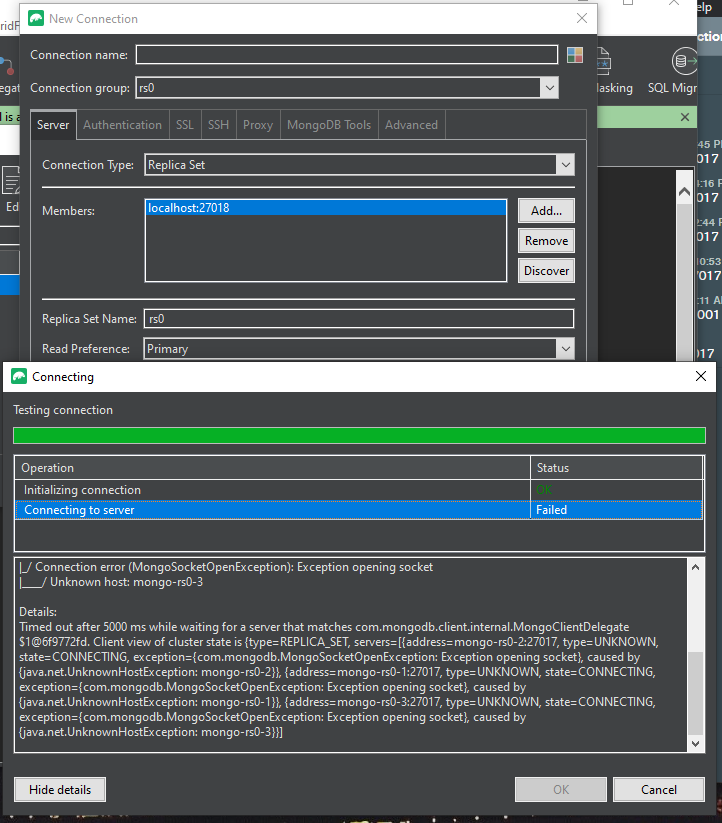

- The connection property is grayed out parallels 2x rdp password#
- The connection property is grayed out parallels 2x rdp series#
- The connection property is grayed out parallels 2x rdp windows#
For instance, if a connection drops repeatedly when a user is running the app, all subsequent failed sign-in attempts count toward the account lockout threshold.įor more information about Windows security baseline recommendations for account lockout, see Configuring Account Lockout. Not all apps that are used in your environment effectively manage how many times a user can attempt to sign in. In environments where different versions of the operating system are deployed, encryption type negotiation increases. When negotiating encryption types between clients, servers, and domain controllers, the Kerberos protocol can automatically retry account sign-in attempts that count toward the threshold limits that you set in this policy setting. Set the account lockout threshold in consideration of the known and perceived risk of those threats. The likelihood of an account theft or a DoS attack is based on the security design for your systems and environment. Consider threat vectors, deployed operating systems, and deployed apps. Implementation of this policy setting depends on your operational environment. Changes to this policy setting become effective without a computer restart when they are saved locally or distributed through Group Policy. This section describes features and tools that are available to help you manage this policy setting. Server type or Group Policy Object (GPO)ĭomain controller effective default settingsĮffective GPO default settings on client computers Default values are also listed on the property page for the policy setting. The following table lists the actual and effective default policy values. LocationĬomputer Configuration\Windows Settings\Security Settings\Account Policies\Account Lockout Policy Default values For more information, see Implementation considerations in this article. Implementation of this policy setting is dependent on your operational environment threat vectors, deployed operating systems, and deployed apps. To allow for user error and to thwart brute force attacks, Windows security baselines recommend a value of 10 could be an acceptable starting point for your organization.Īs with other account lockout settings, this value is more of a guideline than a rule or best practice because there is no "one size fits all." For more information, see Configuring Account Lockout. The threshold that you select is a balance between operational efficiency and security, and it depends on your organization's risk level. For information these settings, see Countermeasure in this article.
The connection property is grayed out parallels 2x rdp password#
Windows doesn’t need to contact a domain controller for an unlock if you enter the same password that you logged on with, but if you enter a different password, Windows has to contact a domain controller in case you had changed your password from another machine. If the number of attempts is greater than the value of Account lockout threshold, the attacker could potentially lock every account.įailed attempts to unlock a workstation can cause account lockout even if the Interactive logon: Require Domain Controller authentication to unlock workstation security option is disabled.
The connection property is grayed out parallels 2x rdp series#
A malicious user could programmatically attempt a series of password attacks against all users in the organization. However, it is important to note that a denial-of-service (DoS) attack could be performed on a domain that has an account lockout threshold configured. Limiting the number of failed sign-ins that can be performed nearly eliminates the effectiveness of such attacks. If Account lockout threshold is set to a number greater than zero, Account lockout duration must be greater than or equal to the value of Reset account lockout counter after.īrute force password attacks can be automated to try thousands or even millions of password combinations for any or all user accounts. You can set a value from 1 through 999 failed sign-in attempts, or you can specify that the account will never be locked by setting the value to 0. A locked account cannot be used until you reset it or until the number of minutes specified by the Account lockout duration policy setting expires. The Account lockout threshold policy setting determines the number of failed sign-in attempts that will cause a user account to be locked. Describes the best practices, location, values, and security considerations for the Account lockout threshold security policy setting.


 0 kommentar(er)
0 kommentar(er)
